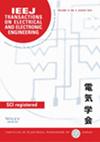求助PDF
{"title":"芬兰Kevitsa矿床大地电磁反演三维先验电阻率神经网络模型建立","authors":"Cuong Van Anh Le, Tuan Van Huynh, Trang Thi Thu Doan, Thuan Van Nguyen","doi":"10.1002/tee.70087","DOIUrl":null,"url":null,"abstract":"<p>Geological information can be interpreted from data collected from drill holes and geophysical method surveys. Limited number of expensive drill holes cannot provide enough information for the vast interest area, but geophysical methods can tell the soil properties through physical parameters as resistivity or inverse of conductivity and seismic velocity if their measurement stations can be sufficiently located. Useful prior geophysical parameter models play a vital role in directing their inversion flow and recovering the good, predicted earth model. Geophysical parameters and chemical elements have strong correlations. This inspires 3D electrical resistivity model building from existences of data collected from drill holes in the Kevitsa Ni-Cu-PGE mineral deposit, Northern Finland. In our work, shallow neural network is applied to predict conductivity value from available mineral chemical elements for each drill hole. Then, 3D interpolation can build 3D conductivity model from all the conductivity values as being measured or predicted. The processed 3D geophysical parameter model can show great match with seismic data and other drill hole information. © 2025 Institute of Electrical Engineers of Japan and Wiley Periodicals LLC.</p>","PeriodicalId":13435,"journal":{"name":"IEEJ Transactions on Electrical and Electronic Engineering","volume":"20 11","pages":"1891-1895"},"PeriodicalIF":1.1000,"publicationDate":"2025-07-03","publicationTypes":"Journal Article","fieldsOfStudy":null,"isOpenAccess":false,"openAccessPdf":"","citationCount":"0","resultStr":"{\"title\":\"3D Prior Electrical Resistivity Model Building for Magnetotelluric Inversion Using Neural Network Algorithm to the Kevitsa Mineral Deposit, Finland\",\"authors\":\"Cuong Van Anh Le, Tuan Van Huynh, Trang Thi Thu Doan, Thuan Van Nguyen\",\"doi\":\"10.1002/tee.70087\",\"DOIUrl\":null,\"url\":null,\"abstract\":\"<p>Geological information can be interpreted from data collected from drill holes and geophysical method surveys. Limited number of expensive drill holes cannot provide enough information for the vast interest area, but geophysical methods can tell the soil properties through physical parameters as resistivity or inverse of conductivity and seismic velocity if their measurement stations can be sufficiently located. Useful prior geophysical parameter models play a vital role in directing their inversion flow and recovering the good, predicted earth model. Geophysical parameters and chemical elements have strong correlations. This inspires 3D electrical resistivity model building from existences of data collected from drill holes in the Kevitsa Ni-Cu-PGE mineral deposit, Northern Finland. In our work, shallow neural network is applied to predict conductivity value from available mineral chemical elements for each drill hole. Then, 3D interpolation can build 3D conductivity model from all the conductivity values as being measured or predicted. The processed 3D geophysical parameter model can show great match with seismic data and other drill hole information. © 2025 Institute of Electrical Engineers of Japan and Wiley Periodicals LLC.</p>\",\"PeriodicalId\":13435,\"journal\":{\"name\":\"IEEJ Transactions on Electrical and Electronic Engineering\",\"volume\":\"20 11\",\"pages\":\"1891-1895\"},\"PeriodicalIF\":1.1000,\"publicationDate\":\"2025-07-03\",\"publicationTypes\":\"Journal Article\",\"fieldsOfStudy\":null,\"isOpenAccess\":false,\"openAccessPdf\":\"\",\"citationCount\":\"0\",\"resultStr\":null,\"platform\":\"Semanticscholar\",\"paperid\":null,\"PeriodicalName\":\"IEEJ Transactions on Electrical and Electronic Engineering\",\"FirstCategoryId\":\"5\",\"ListUrlMain\":\"https://onlinelibrary.wiley.com/doi/10.1002/tee.70087\",\"RegionNum\":4,\"RegionCategory\":\"工程技术\",\"ArticlePicture\":[],\"TitleCN\":null,\"AbstractTextCN\":null,\"PMCID\":null,\"EPubDate\":\"\",\"PubModel\":\"\",\"JCR\":\"Q4\",\"JCRName\":\"ENGINEERING, ELECTRICAL & ELECTRONIC\",\"Score\":null,\"Total\":0}","platform":"Semanticscholar","paperid":null,"PeriodicalName":"IEEJ Transactions on Electrical and Electronic Engineering","FirstCategoryId":"5","ListUrlMain":"https://onlinelibrary.wiley.com/doi/10.1002/tee.70087","RegionNum":4,"RegionCategory":"工程技术","ArticlePicture":[],"TitleCN":null,"AbstractTextCN":null,"PMCID":null,"EPubDate":"","PubModel":"","JCR":"Q4","JCRName":"ENGINEERING, ELECTRICAL & ELECTRONIC","Score":null,"Total":0}
引用次数: 0
引用
批量引用


 求助内容:
求助内容: 应助结果提醒方式:
应助结果提醒方式:


